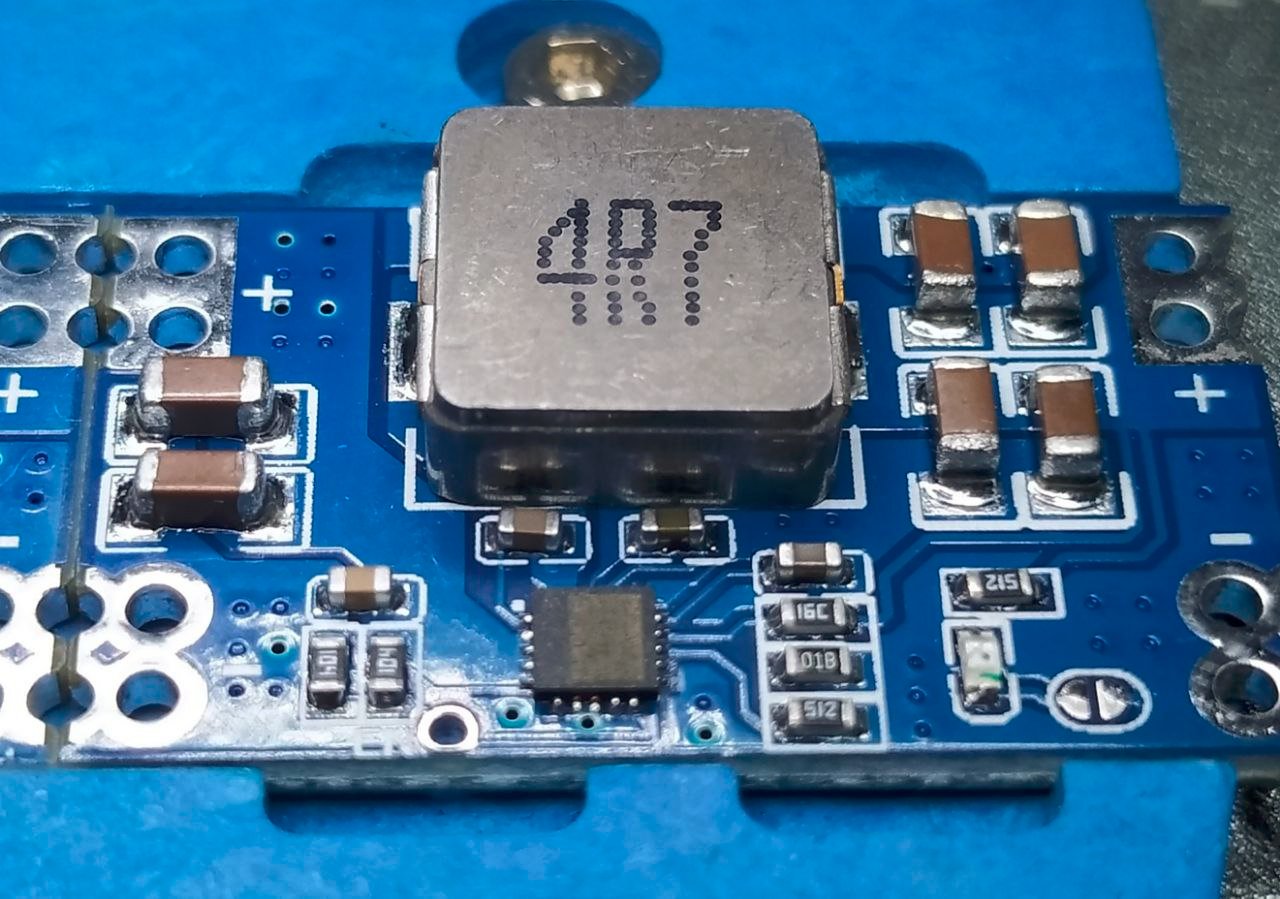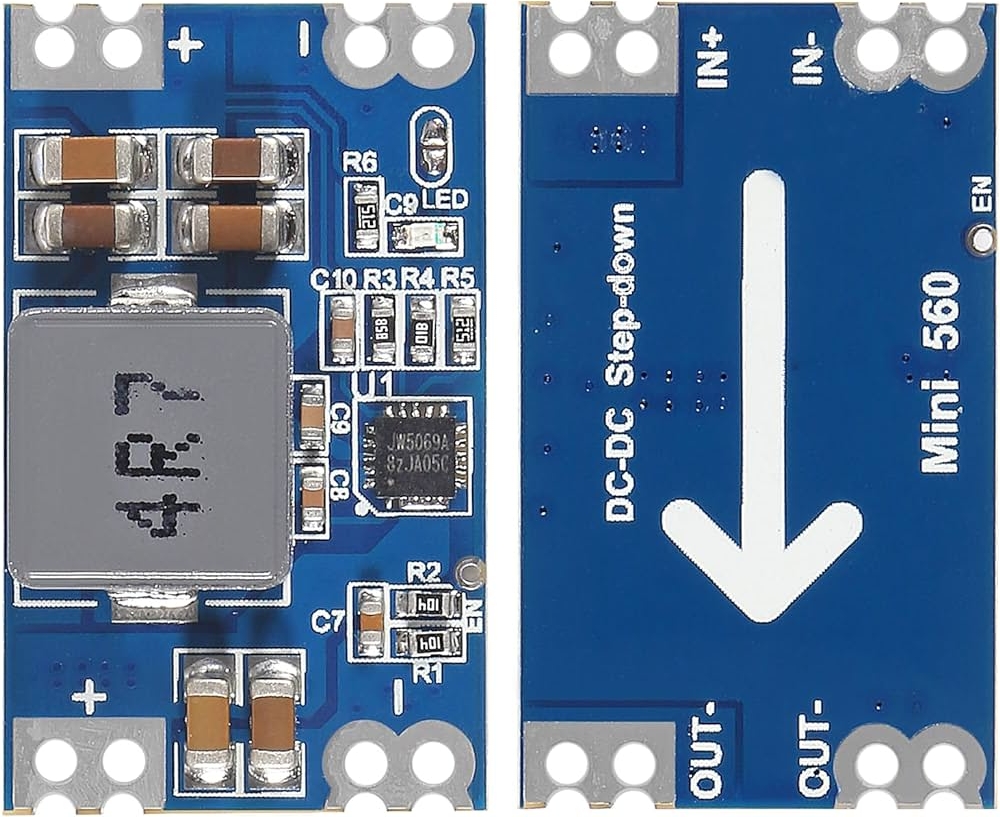Hunting For Part Numbers: Analyzing The Buck Converter On Mini 560 Modules [Hackaday]

Some of us may have recently stumbled over these mysterious ‘Mini 560’ synchronous buck converter modules at various e-shopping websites. These little modules claim to take in 7-20 VDC and output whatever voltage they’re configured for (e.g., 5 VDC). What IC is used on these modules? Since the IC on these modules has had its markings laser-etched away, answering that particular question is a tedious sleuthing job. Fortunately, [MisterHW] has done the legwork for us already, with a detailed write-up.
Details like the nominal input rating, measured currents, and resulting efficiency values provide clues. Looking at the 0603 SMD resistor values for given output voltages provides the programming resistances, combined with the footprint of the QFN-20 package. After desoldering the IC on a sample board, the footprint was reminiscent of certain Texas Instruments (Ti) packages, leading to a perusal of the Ti parametric database and a couple of candidate matches.

The other provided parameters for the Mini 560, such as the 500 kHz frequency, narrows things down to two Ti parts: the TPS51397A and TPS56C230. The latter only accepts up to 18 VDC unless you look at the absolute maximum ratings, which matches the 20 VDC. The pin-out of the TPS56C230 also matches the Mini560 IC, but looking deeper, there’s no good match.
Catching a lucky break, [MisterHW] got pointed to the JoulWatt JW5069A, which, as it turns out, is a good match, including the odd footprint with bridged pads. Googling for this part number even led to images of the Mini 560 module without the laser-etching. It looks like JoulWatt may have been founded in China in 2013 to provide drop-in alternatives for Western parts like those from Ti (with the JW5068A also very interesting), but it still doesn’t really explain the laser-etched markings unless these parts aren’t designed for the export market? Some mysteries may never truly be solved, it seems.
Of course, we’ve seen other buck converter modules that are less mysterious. Want to know the theory behind it? We got you.

![hunting-for-part-numbers:-analyzing-the-buck-converter-on-mini-560-modules-[hackaday]](https://i0.wp.com/upmytech.com/wp-content/uploads/2024/05/185955-hunting-for-part-numbers-analyzing-the-buck-converter-on-mini-560-modules-hackaday.jpg?resize=800%2C445&ssl=1)